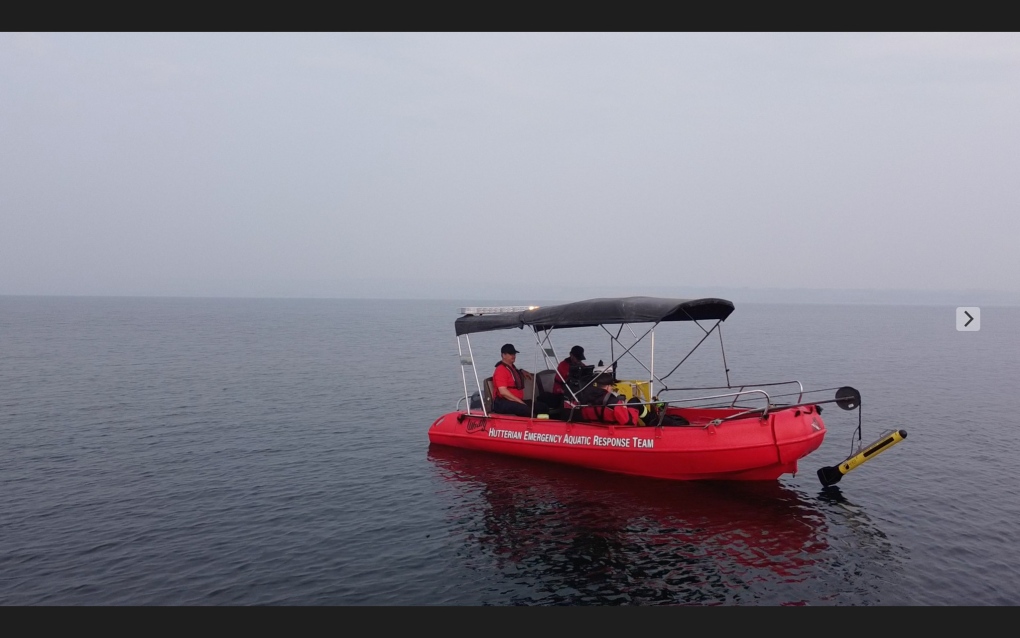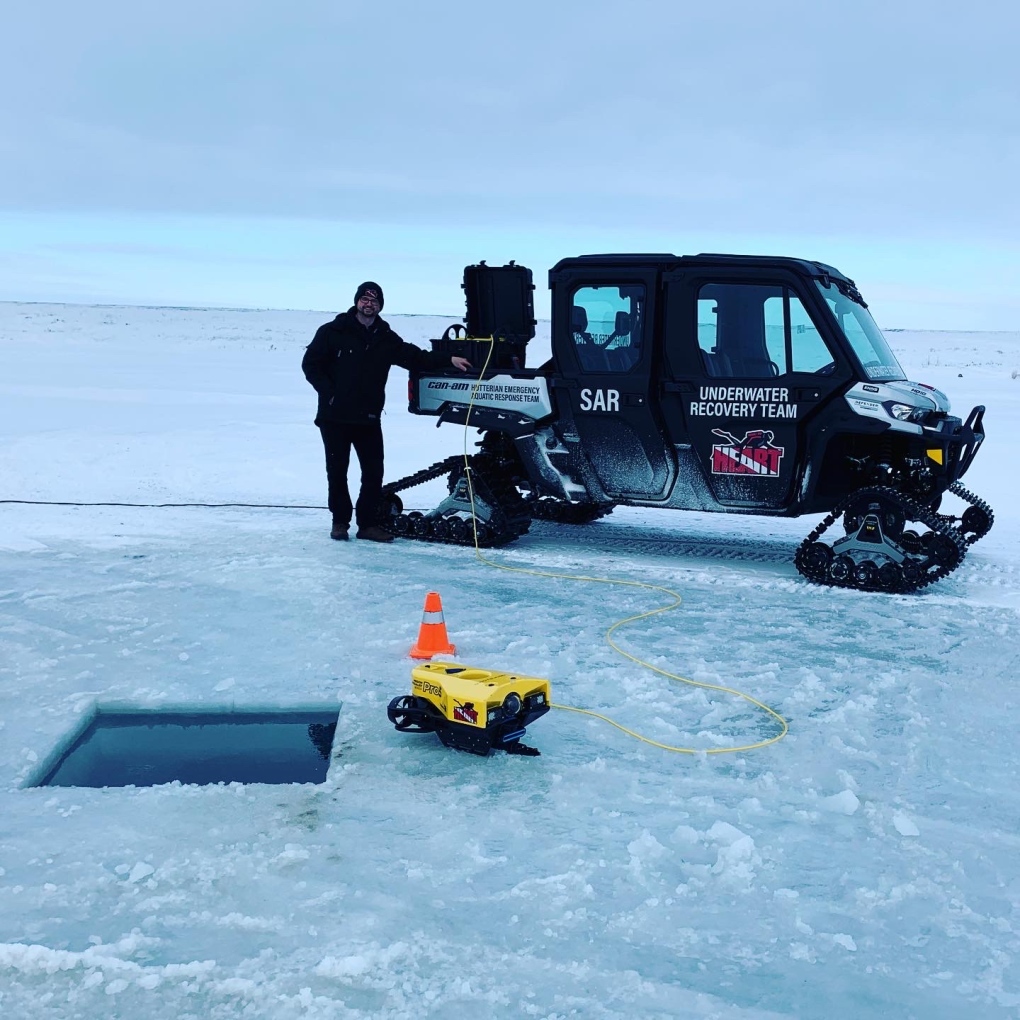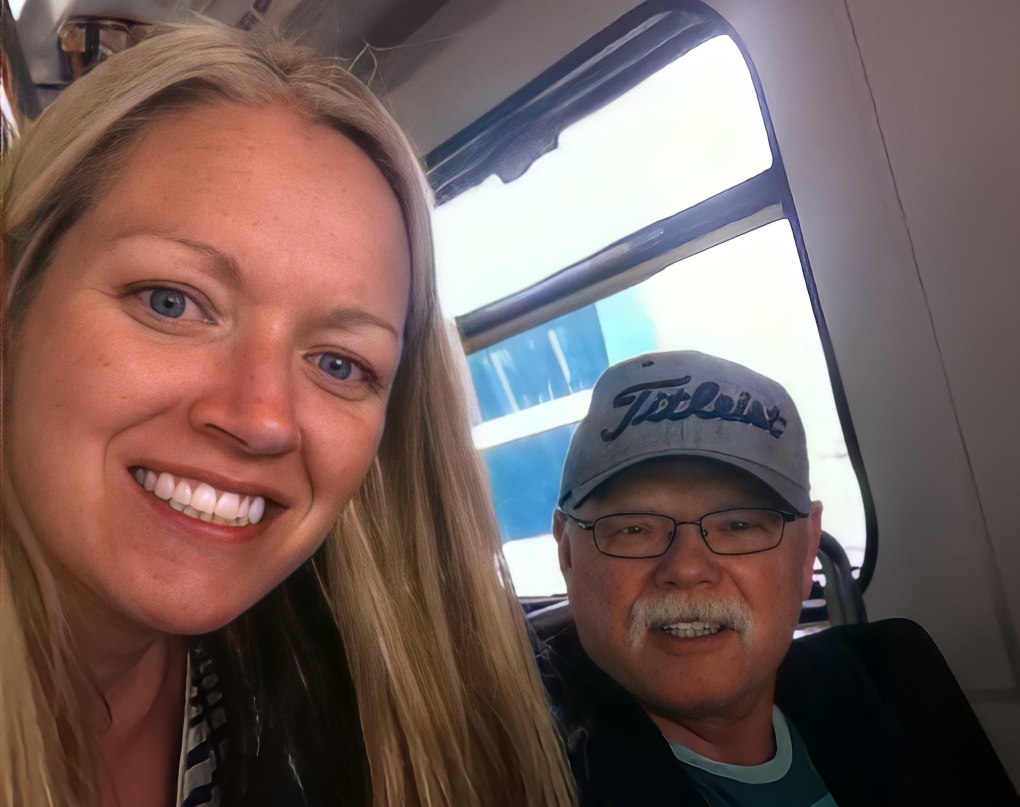Manitoba water recovery group getting new hovercraft from Russia

A new piece of equipment for the Hutterian Emergency Aquatic Response Team (HEART) will soon be leaving St. Petersburg, Russia for a journey to its future home in Manitoba.
It is a hovercraft, and it will allow the volunteer group to safely navigate and respond to calls during winter’s shoulder seasons when open water and thin ice create dangerous conditions.
“Every year there is a dozen (people) or so in Canada that drown by breaking through the ice and they are very tough to recover because you can’t get a boat out because the boat launches are all frozen in still, and the search area is out on thin ice so you can’t put a dive team down,” said Paul Maendel, HEART team lead.
That is where the usefulness of a hovercraft comes in. The craft can simply travel to the destination over ground, ice and water.
 Paul Maendel and Manuel Maendel on HEART’s current 16ft boat
Paul Maendel and Manuel Maendel on HEART’s current 16ft boat
Paul Maendel and Manuel Maendel on HEART’s current 16ft boat (Naomi Murray, HEART)
HEART started as a small dive team formed around 10 years ago in response to numerous drownings on Hutterite colonies where the victims took a long time to be discovered.
“It started slow and small, but every recovery that we did we learned a whole lot and continued to advance our skills to the point where now we have some of the most advanced underwater recovery equipment in the world,” said Maendel.

HEART Team member Manuel Maendel HEART Team member on the ice with ROV (Naomi Murray, HEART)
He said the most difficult part in underwater recovery is locating the victim, but modern technology has allowed the method of recovery to change. What used to be the domain of a diver navigating murky low or no visibility waters has switched to Sonar and remote-operated vehicles.
“When you can’t see, the only way you can do a recovery is by feeling which means you systematically have to comb the whole bottom of the search area,” Maendel said.
While painstaking, the method is efficient, assuming the target area is known. However, when it is not, recovery often becomes impossible.
Now, HEART relies more on a towed side-scan sonar device and a remote operated vehicle (ROV) to detect and recover victims.
Despite the changes in technology, the importance of the HEART team does not.
“We see the need for this team because if we didn’t do it, there are very few options for families of loved ones when law enforcement, whether it’s the RCMP or Winnipeg dive team, when they tell families we’ve used up all of their resources, we can’t make the recovery,” said Maendel.
The impacts are evident in HEART’s new fundraising volunteer Naomi Murray. The team helped recover her father’s body after he drowned in a boating incident.
“As a family member, you have this tormenting thought. You can’t leave them, you can’t leave them out there even though you know they are gone but even on that sense you wonder are they actually really gone?” said Murray.

Naomi Murray and her father Daryll Fenton, recovered by HEART from Moose Lake, Manitoba May 29, 2021 (Naomi Murray, HEART)
Last year HEART was part of 16 recoveries across Western Canada and all of the recoveries are done free of charge. The group is funded through donations from Hutterite colonies, corporations and Manitoba foundations.
The new hovercraft is expected to arrive sometime this spring, but has been affected by supply chain issues.
In addition to the hovercraft, a larger boat is also on the way because the one they currently have is not useable in rougher waters.
“You can have all the passion in the world but if you don’t have the right equipment you’re a bystander,” Maendel said.
CTVNews.ca Top Stories

Much of Canada is under a weather alert this weekend: here's what to know
From snow, to high winds, to extreme cold, much of Canada is under a severe weather alert this weekend. Here's what to expect in your region.
'I gave them a call, they didn't pick up': Canadian furniture store appears to have gone out of business
Canadian furniture company Wazo Furniture, which has locations in Toronto and Montreal, appears to have gone out of business. CTV News Toronto has been hearing from customers who were shocked to find out after paying in advance for orders over the past few months.
Fugitive U.S. rioter seeks asylum in Whistler amid warnings of more to come
An American citizen convicted of participating in the Jan. 6, 2021, riot on Capitol Hill and dodging jail time in Whistler may just be the start of an asylum-seeking rush, according to a prominent legal expert.
Jeff Baena, writer, director and husband of Aubrey Plaza, dead at 47
Jeff Baena, a writer and director whose credits include 'Life After Beth' and 'The Little Hours,' has died, according to the Los Angeles County Medical Examiner.
Soldier who died by suicide in Las Vegas told ex-girlfriend of pain and exhaustion after Afghanistan
The highly decorated Special Forces soldier who died by suicide in a Cybertruck explosion on New Year's Day confided to a former girlfriend who had served as an Army nurse that he faced significant pain and exhaustion that she says were key symptoms of traumatic brain injury.
Four puppies abandoned in northern Ont. rescued, rehomed
On New Year's Day, a pair had gone for a drive on northern Ontario backroads near Markstay-Warren to look at the local wildlife when they came upon four puppies in the middle of the road in the cold.
Man injured in Longueuil home invasion in the presence of a child
A Longueuil resident was injured during a home invasion early Saturday morning in the presence of a child.
Reminders of Jan. 6 attack fade in the Capitol as Trump retakes power
Inside the U.S. Capitol, reminders of the violence are increasingly hard to find.
'It's historic': Canada needs to change development program after World Juniors loss, experts say
Team Canada's 4-3 loss to Czechia in the world junior hockey championship, eliminating the team from medal contention for the second straight year at the hands of the same opponents, has some hockey analysts questioning whether Canada needs to retool its player-development program in order to keep up with other powerhouse countries.

































